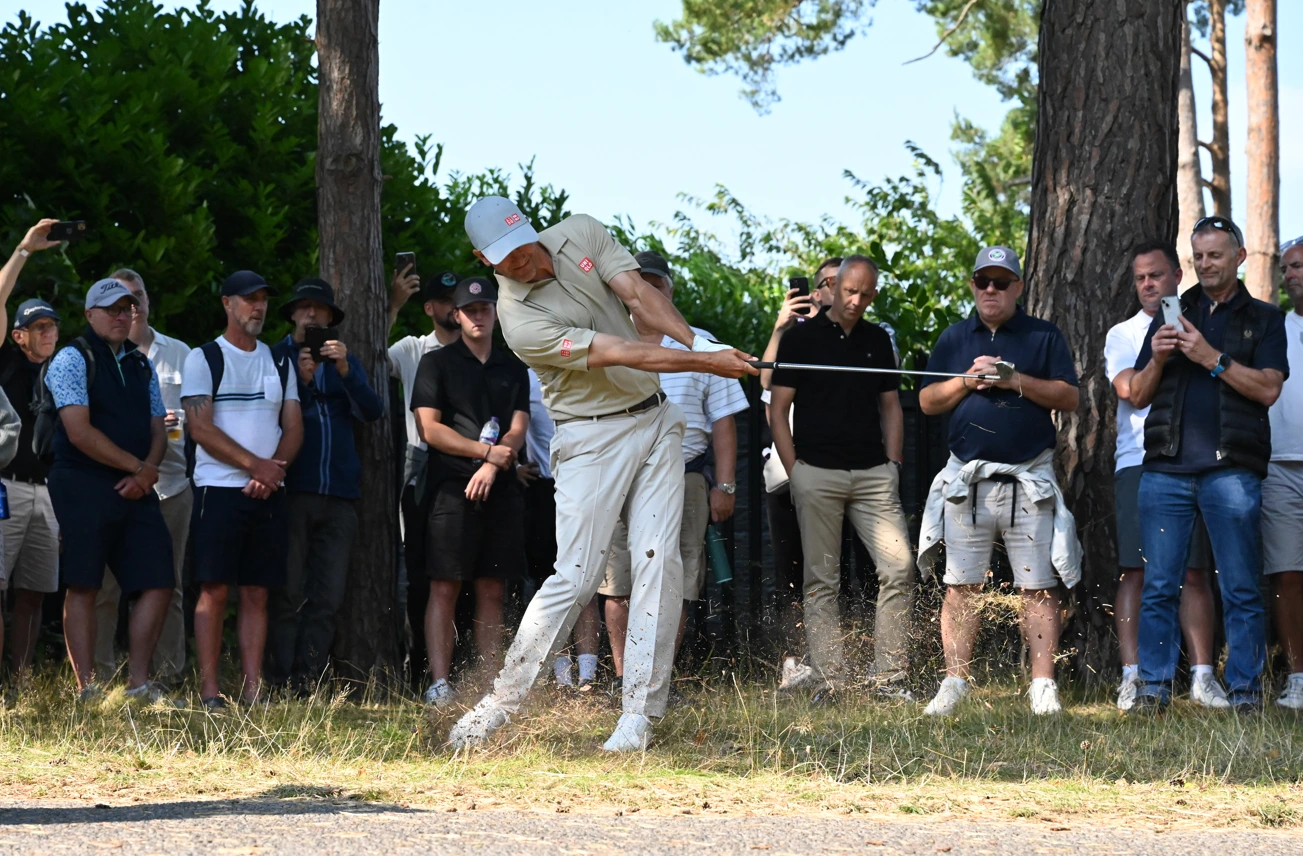Mastering the short game is crucial for golfers aiming to lower their scores and enhance overall performance. While long drives capture attention, it’s the finesse around the greens that often determines success. Here are ten strategies to elevate your short game:
1. Maintain Stability During Putting
Achieving consistent distance control in putting hinges on a stable stance. Unnecessary movements can disrupt the putter’s path, leading to inconsistent strokes. To enhance stability, position your feet shoulder-width apart to create a solid base. Distribute weight evenly between both feet, maintaining a slight knee flex. Keep your head steady and eyes directly over the ball. By minimizing extraneous movements, you promote a smoother stroke, resulting in more predictable outcomes.
2. Emphasize Weight Distribution in Chipping
Effective chipping relies on proper weight distribution, facilitating a downward strike and cleaner contact. To achieve this, position the ball slightly back in your stance. Lean weight onto your lead foot (left foot for right-handed golfers), maintaining approximately 60-70% pressure. Keep hands ahead of the ball at address. This setup encourages a descending blow, reducing the likelihood of thin or fat shots and enhancing control over trajectory and roll.
3. Utilize the Club’s Bounce in Pitching
Engaging the club’s bounce is crucial for successful pitch shots, preventing the leading edge from digging into the turf. To effectively use the bounce, slightly open the clubface at address. Adjust grip to accommodate the open face, ensuring alignment with your intended target. Maintain a shallow angle of attack, allowing the club to glide through the grass. This technique promotes solid contact and consistent distance control, especially from tight lies.
4. Adjust Setup for Varying Distances
Managing shorter shots requires precise adjustments in setup to control distance effectively. Consider narrowing stance for shorter shots to limit body movement. Choke down on the club for better control. Shorten backswing proportionally to desired shot distance. These modifications facilitate controlled swings, aiding in precise distance control and accuracy.
5. Commit to Ground Contact for Proper Launch
Achieving desired ball flight necessitates a downward strike, ensuring the club contacts the ground after the ball. This technique promotes proper compression and spin, ensures consistent launch angle, and prevents scooping, which often leads to thin shots. Practicing this method enhances your ability to control trajectory and distance effectively.
6. Prepare for Bunker Shots
In greenside bunkers, establishing a stable base is essential for consistent contact and control. To prepare, dig feet into the sand to lower center of gravity. Adopt a slightly open stance to facilitate an outside-in swing path. Open the clubface to utilize the bounce effectively. This setup allows the club to slide under the ball, promoting a high, soft landing.
7. Match Swing Length to Desired Distance
Consistency in swing length leads to predictable shot distances. To achieve this, use reference points (e.g., hip height, shoulder height) to gauge swing length. Maintain a smooth, even tempo throughout the swing. Mirror backswing length in follow-through for balance. Focusing on these aspects ensures natural rhythm and control, translating to better distance management.
8. Incorporate Body Pivot in High Shots
For lofted shots, allowing your body to pivot through the swing facilitates a higher trajectory. To implement this, open stance slightly to promote body rotation. Shift weight smoothly onto lead foot during downswing. Allow chest to rotate towards the target through impact. This movement ensures the clubface remains open, promoting the desired ball flight and soft landing.
9. Center the Ball for Consistency
Positioning the ball in the center of your stance during short game shots promotes consistent contact. This setup ensures club bottoms out at the correct point, reduces risk of hitting too far behind or ahead of the ball, and enhances control over shot trajectory and spin. Consistent ball positioning is fundamental for reliable short game performance.
10. Document and Analyze Your Short Game
Keeping detailed records of your short game performance can identify areas needing improvement. To do this, track metrics such as up-and-down percentages, sand saves, and average putts per round. Review performance data to identify patterns or recurring issues. Set specific, measurable goals for improvement based on analysis. Regularly updating and reviewing your short game statistics provides valuable insights, allowing for targeted practice and measurable progress.
By integrating these strategies into your practice routine, you can enhance your short game proficiency, leading to lower scores and increased confidence on the course.
For a comprehensive drill to further refine your short game skills, explore John Rahm’s towel drill: the short game secret golfers need



